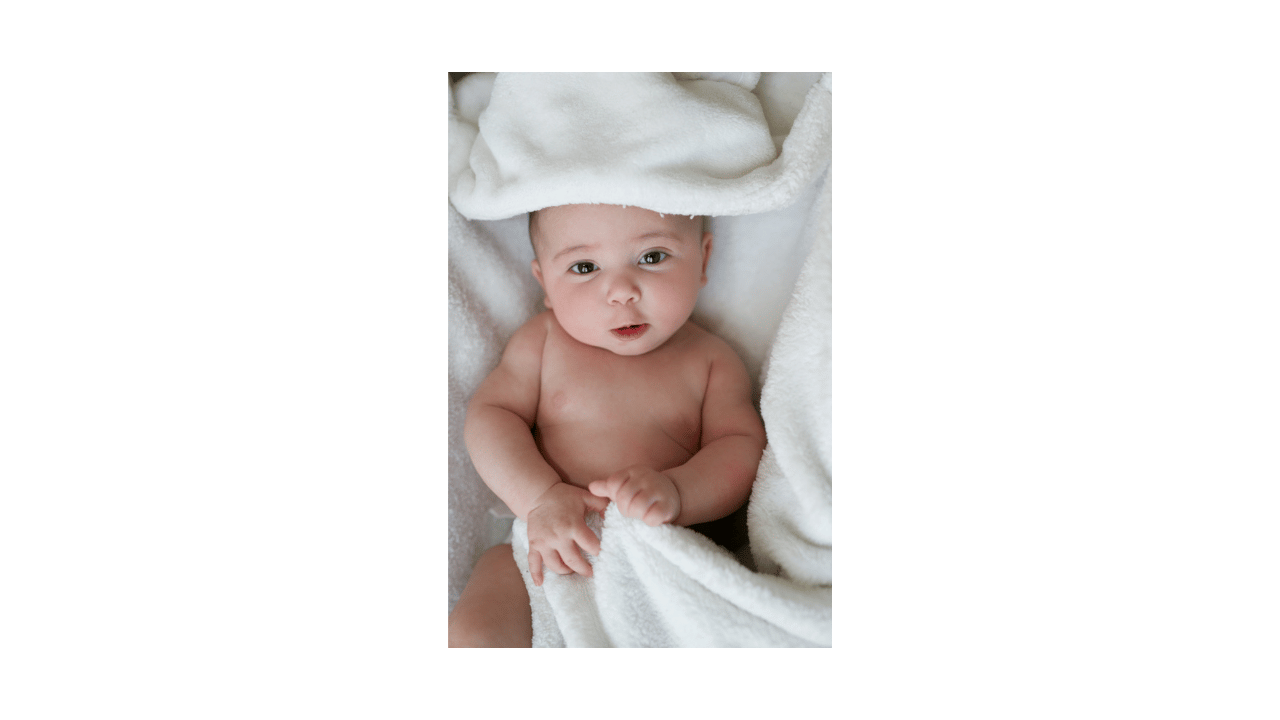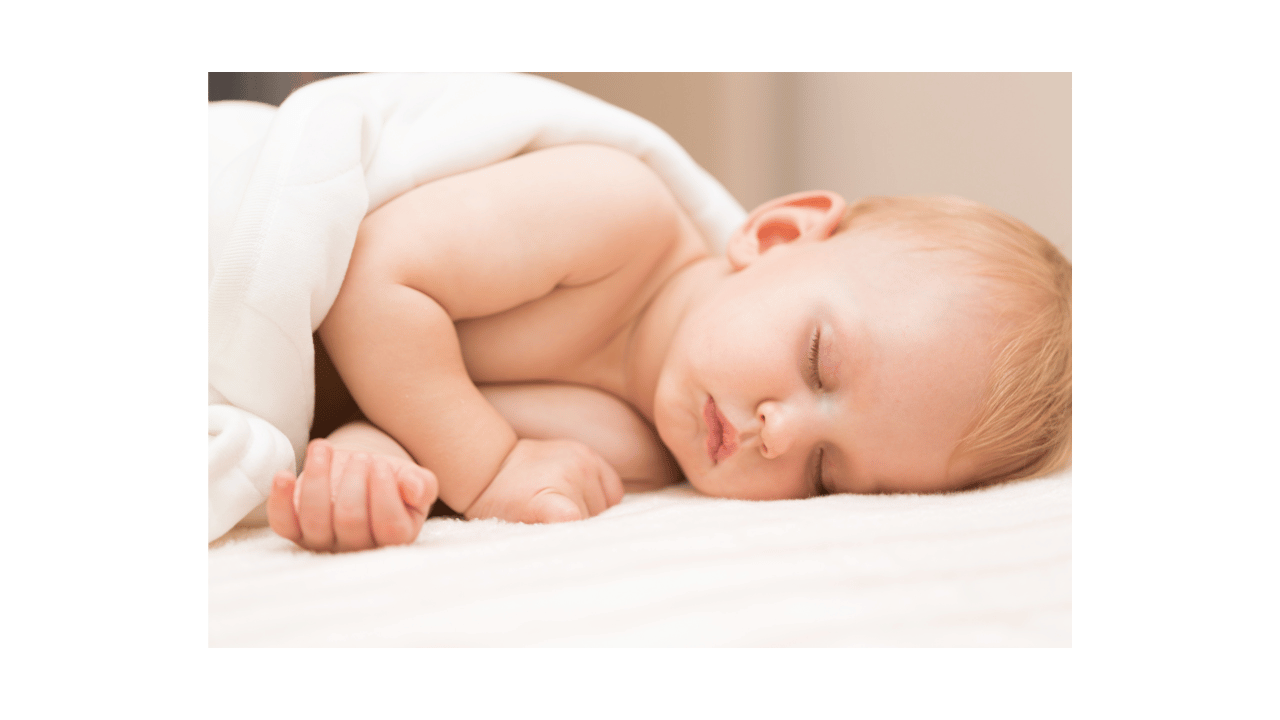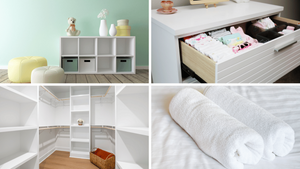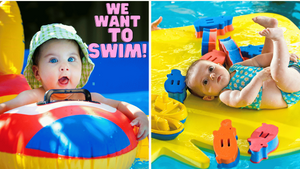It is a rite of passage for every parent—the moment your baby graduates from a tiny sleeper to their bed. But when transitioning to the big kid bed, one of the biggest questions you will certainly face is whether or not they can sleep with a comforter.
As parents, we want nothing more than for our little ones to be safe and comfortable so all precautions must be taken before allowing them into the world of blankets.
So if you’re wondering “When is it safe for my baby to sleep with a comforter?” read on as this guide provides expert advice and recommendations for determining when your baby should have cozy night-time essentials in their sleeping environment.

When Can Baby Sleep With A Comforter
Here are a few things to consider when determining when it is safe for your baby to sleep with a comforter:
• Age – The American Academy of Pediatrics recommends keeping soft objects, such as pillows and comforters out of the sleeping area for children younger than 12 months. This is because Sudden Infant Death Syndrome affects babies under one year old.
• Mobility – Babies are also at risk of suffocation due to their lack of mobility. If your child is not yet able to roll over, sit up or crawl out from underneath the comforter then it’s best to wait until they have more control over their body movements before allowing them to sleep with a blanket.
• Temperature – Comforters can be great for keeping your baby warm during colder months, but it is important to make sure they are not too hot. If the room temperature is comfortable and your baby feels too hot when covered up with a blanket then it might be best to opt for lighter bedding options such as sheets or sleep sacks instead.
• Size – Make sure that the comforter is not too large for the crib or bed. If your baby could get tangled up in the blanket then it is best to avoid using a comforter until they are of an age and size where this won’t be a concern.
Ultimately, it is important to use your best judgment when determining when it is safe for your baby to sleep with a comforter. Make sure to take all necessary safety precautions and if you ever have any doubts, speak with your pediatrician before introducing blankets into the sleeping area.
With these tips, you can ensure that your baby is safe and comfortable as they transition into their bed.
Understanding the Risks of Comforters for Babies
When it comes to comforters and baby sleep safety, knowledge is key. You should never put a comforter or pillow in the crib with an infant because of the risks associated with these items.
Soft bedding such as comforters can increase the risk of Sudden Infant Death Syndrome (SIDS) by suffocating or smothering your baby while they are sleeping.
It is also important to note that babies can easily become tangled in blankets, which can pose a strangulation hazard. In some cases, comforter fabrics such as fleece or velvet can also be too warm and increase the risk of overheating.
How to Create a Safe Sleeping Environment for Babies
Now that you know the risks associated with comforters and baby sleep safety, here are a few tips to help create a safe sleeping environment for your little one:
• Keep soft objects such as comforters, pillows, stuffed animals, and bumper pads out of the crib.
• Use lightweight blankets such as sheets or sleep sacks to keep your baby warm at night.
• Monitor the room temperature and dress your baby in appropriate layers for the season.
• Make sure all blankets fit snugly to the bed without any extra fabric that can get tangled up with your baby.
By following these simple tips, you can help create a safe sleeping environment for your little one.
What Age Should You Introduce a Comforter to Your Baby's Bedroom
Once your child is between 12-18 months old, you can begin to introduce soft bedding such as comforters into their bedroom. It’s important to make sure that the comforter fits properly and does not pose a choking or suffocation hazard.
You should also keep an eye on how warm your baby gets with the blanket and dress them appropriately for the season. With these safety tips in mind, you can slowly introduce a comforter into your baby’s sleeping environment to help them stay cozy and comfortable through the night.

Choosing the Right Comforter for Your Baby
When it comes to choosing the right comforter for your baby’s bedroom, there are a few things you should consider. First, make sure that the fabric is lightweight and breathable so as not to increase the risk of overheating.
Cotton or polyester blends are ideal materials for baby bedding since they are both comfortable and durable. You should also look for comforters that are free of dyes and chemicals, as some fabrics can cause irritation or allergies in babies.
How To Care For and Clean Your Baby's Comforter
Caring for and cleaning your baby’s comforter is an important part of ensuring their safety. To keep the comforter in good condition, make sure to follow the manufacturer’s instructions for proper washing and drying.
It's also important to inspect the comforter regularly for any signs of wear or damage that could compromise your baby’s safety. If the comforter gets too worn or damaged, it’s best to replace it with a new one.
Tips and Tricks For Keeping Your Baby Safe While Sleeping With A Comforter
• Make sure the comforter fits properly and is not too large for the crib or bed.
• Inspect the comforter regularly to ensure it is free of rips, tears, or stains.
• Dress your baby appropriately for the season and remove any extra blankets if they seem too hot.
• Keep soft objects such as pillows and stuffed animals out of the sleeping area.
• If in doubt, speak with your pediatrician before introducing blankets into the sleeping area.
By following these tips and tricks, you can help ensure a safe and comfortable sleeping environment for your baby when using a comforter.
FAQs
Is it safe for babies to sleep with a comforter?
It is generally safe for babies over 12 months old to sleep with a comforter. However, safety should always be your priority when allowing your child to use a comforter. Make sure that the comforter is lightweight and well-fitted, and that all loose threads are tucked in or cut away. It's also important to ensure that the comforter is not too warm and that your baby has enough room to move around in their bed.
What is the best comforter for babies?
The best comforter for babies should be lightweight and breathable, made of safe materials, and machine washable. Look for comforters made with 100% natural fibers such as cotton or wool. Allergenic material like down may not be the best choice. Additionally, opt for a comforter that has been certified by OEKO-TEX® Standard 100, an international safety certification program that tests for harmful substances in textiles.
What are the side effects of using a comforter?
It is important to ensure that the comforter is not too warm, as this can cause your baby to overheat. Overheating can cause dehydration, difficulty sleeping, and in extreme cases Sudden Infant Death Syndrome (SIDS). Additionally, loose threads or stuffing from the comforter could pose a choking hazard for your baby. Make sure all loose threads are tucked in or cut away before use.
Final Thoughts
It's clear that the great comforter conundrum has its pros and cons. The key to a safe snooze-a-thon for your little one lies in finding the perfect balance. Remember, safety first—always opt for a breathable and lightweight covering to avoid any risky business. Keep those crib escapades to a minimum by introducing the comforter after your baby hits the 12-month milestone. And why not get creative? Customize that cozy haven with a unique scent or a familiar object to make it extra snuggle-worthy. With these tips and tricks up your sleeve, you'll be well on your way to mastering the art of sweet, safe slumbers for your tiny dreamer. So go forth, sleep superheroes, and embrace the power of the comforter!




